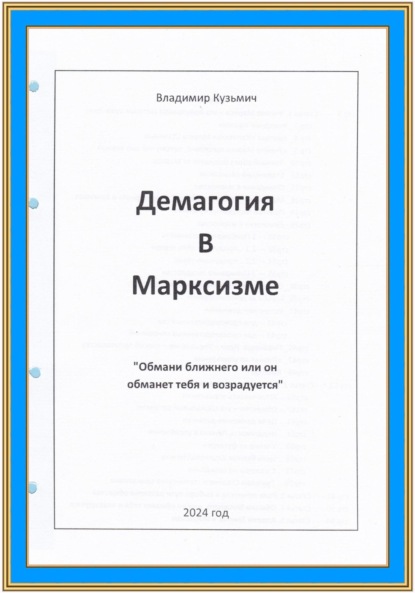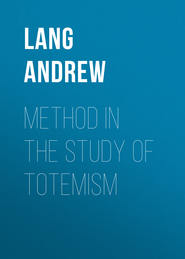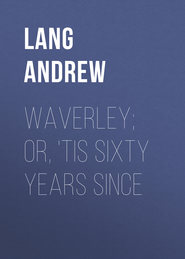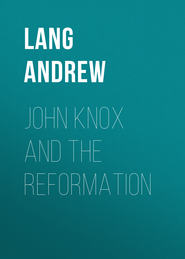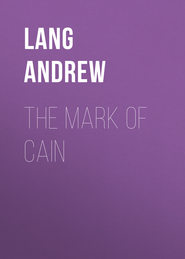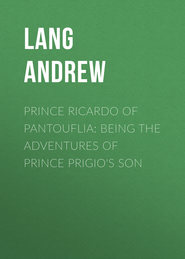По всем вопросам обращайтесь на: info@litportal.ru
(©) 2003-2024.
✖
The Mystery of Mary Stuart
Настройки чтения
Размер шрифта
Высота строк
Поля
Bain, ii. 434.
268
Nov. 8, 1571. Murdin, p. 57.
269
State Trials, i. 978.
270
As to ‘the subtlety of that practice,’ which puzzled Mr. Froude, Laing offers a highly ingenious conjecture. Mary was to do the Scots translations, procured for her by Lethington, into her own French, omitting the compromising portions. Lethington was next ‘privately to substitute or produce the Queen’s transcript instead of the originals, with the omission of those criminal passages, which might then be opposed as interpolated in the translation.’ But in that case ‘some variance of phrase’ by Mary could bring nothing ‘to light,’ for there would be no originals to compare. Lethington, while slipping Mary’s new transcript into the Casket (Laing, i. 145, 146), would, of course, remove the original letters in French, leaving the modified transcript in their place. ‘Variance of phrase’ between an original and a translation could prove nothing. Moreover, if Lethington had access to the French letters, it was not more dangerous for him to destroy them than to substitute a version which Moray, Morton, Buchanan, and all concerned could honestly swear to be false. The Bishop of Ross did, later, manage an ingenious piece of ‘palming’ letters on Cecil, but, in the story of ‘palming’ fresh transcripts into the Casket there is no consistency. Moreover Melville’s word is at least as good as Lesley’s, and Melville denies the truth of Lesley’s confession.
271
British Museum Addit. MSS. 33531, fol. 119, et seq. The MS. is much injured.
272
Murdin, pp. 52, 58.
273
Bain, ii. 524.
274
Addit. MSS. ut supra.
275
Goodall, ii. 111.
276
Bain, ii. 518, 519.
277
Ibid. 519.
278
Bain, ii. 524.
279
Lennox MSS.
280
Bain, ii. 520, 521.
281
Goodall, ii. 140.
282
The production is asserted, Goodall, ii. 87.
283
Calderwood, iii. 556.
284
For the Ainslie Band, and the signatories, see Bain, ii. 322, and Hay Fleming, p. 446, note 60, for all the accounts.
285
Hosack, i. 543.
286
There are two sets of extracts (Goodall, ii. 148-153): one of them is in the Sadleyr Papers, edited by Sir Walter Scott, and in Haynes, p. 480. This is headed ‘A brief Note of the chief and principal points of the Queen of Scots Letters written to Bothwell for her consent and procurement of the murder of her husband, as far forth as we could by the reading gather.’ The other set is in Scots, ‘Notes drawin furth of the Quenis letters sent to the Erle Bothwell.’ If this were, as Miss Strickland supposed, an abstract made and shown in June-July, it would prove, of course, that Letter II. was then in its present shape, and would destroy my hypothesis. But Cecil endorses it. ‘sent October 29.’ I think it needless to discuss the notion that Lethington and his companions showed only the Scots texts, and vowed that they were in Mary’s handwriting! They could not conceivably go counter, first, to Moray’s statement (June 22, 1568) that the Scots versions were only translations. Nor could they, later, produce the Letters in French, and pretend that both they and the Scots texts were in Mary’s hand. Doubtless they showed the French (though we are not told that they did), but the English Commissioners, odd as it seems, preferred to send to Elizabeth extracts from the Scots.
287
Bain, ii. 526-528. See also in Hosack, ii. 496-501, with the obliterated lines restored.
288
Bain, ii. 529-530.
289
Bain, ii. 533, 534.
290
Goodall, ii. 162-170. The dates here are difficult. Lesley certainly rode to Bolton, as Knollys says, on October 13, a Wednesday. (See the English Commissioners to Elizabeth. Goodall, ii. 173. York, October 17.) By October 17, Lesley was again at York (Goodall, ii. 174). Therefore I take it that Lesley’s letter to Mary (Bain, ii. 533, 534) is of October 18, or later, and that the ‘Saturday’ when Norfolk and Lethington rode together, and when Lethington probably shook Norfolk’s belief in the authenticity of the Casket Letters, is Saturday, October 16.
291
Bain, ii. 533, 534.
292
268
Nov. 8, 1571. Murdin, p. 57.
269
State Trials, i. 978.
270
As to ‘the subtlety of that practice,’ which puzzled Mr. Froude, Laing offers a highly ingenious conjecture. Mary was to do the Scots translations, procured for her by Lethington, into her own French, omitting the compromising portions. Lethington was next ‘privately to substitute or produce the Queen’s transcript instead of the originals, with the omission of those criminal passages, which might then be opposed as interpolated in the translation.’ But in that case ‘some variance of phrase’ by Mary could bring nothing ‘to light,’ for there would be no originals to compare. Lethington, while slipping Mary’s new transcript into the Casket (Laing, i. 145, 146), would, of course, remove the original letters in French, leaving the modified transcript in their place. ‘Variance of phrase’ between an original and a translation could prove nothing. Moreover, if Lethington had access to the French letters, it was not more dangerous for him to destroy them than to substitute a version which Moray, Morton, Buchanan, and all concerned could honestly swear to be false. The Bishop of Ross did, later, manage an ingenious piece of ‘palming’ letters on Cecil, but, in the story of ‘palming’ fresh transcripts into the Casket there is no consistency. Moreover Melville’s word is at least as good as Lesley’s, and Melville denies the truth of Lesley’s confession.
271
British Museum Addit. MSS. 33531, fol. 119, et seq. The MS. is much injured.
272
Murdin, pp. 52, 58.
273
Bain, ii. 524.
274
Addit. MSS. ut supra.
275
Goodall, ii. 111.
276
Bain, ii. 518, 519.
277
Ibid. 519.
278
Bain, ii. 524.
279
Lennox MSS.
280
Bain, ii. 520, 521.
281
Goodall, ii. 140.
282
The production is asserted, Goodall, ii. 87.
283
Calderwood, iii. 556.
284
For the Ainslie Band, and the signatories, see Bain, ii. 322, and Hay Fleming, p. 446, note 60, for all the accounts.
285
Hosack, i. 543.
286
There are two sets of extracts (Goodall, ii. 148-153): one of them is in the Sadleyr Papers, edited by Sir Walter Scott, and in Haynes, p. 480. This is headed ‘A brief Note of the chief and principal points of the Queen of Scots Letters written to Bothwell for her consent and procurement of the murder of her husband, as far forth as we could by the reading gather.’ The other set is in Scots, ‘Notes drawin furth of the Quenis letters sent to the Erle Bothwell.’ If this were, as Miss Strickland supposed, an abstract made and shown in June-July, it would prove, of course, that Letter II. was then in its present shape, and would destroy my hypothesis. But Cecil endorses it. ‘sent October 29.’ I think it needless to discuss the notion that Lethington and his companions showed only the Scots texts, and vowed that they were in Mary’s handwriting! They could not conceivably go counter, first, to Moray’s statement (June 22, 1568) that the Scots versions were only translations. Nor could they, later, produce the Letters in French, and pretend that both they and the Scots texts were in Mary’s hand. Doubtless they showed the French (though we are not told that they did), but the English Commissioners, odd as it seems, preferred to send to Elizabeth extracts from the Scots.
287
Bain, ii. 526-528. See also in Hosack, ii. 496-501, with the obliterated lines restored.
288
Bain, ii. 529-530.
289
Bain, ii. 533, 534.
290
Goodall, ii. 162-170. The dates here are difficult. Lesley certainly rode to Bolton, as Knollys says, on October 13, a Wednesday. (See the English Commissioners to Elizabeth. Goodall, ii. 173. York, October 17.) By October 17, Lesley was again at York (Goodall, ii. 174). Therefore I take it that Lesley’s letter to Mary (Bain, ii. 533, 534) is of October 18, or later, and that the ‘Saturday’ when Norfolk and Lethington rode together, and when Lethington probably shook Norfolk’s belief in the authenticity of the Casket Letters, is Saturday, October 16.
291
Bain, ii. 533, 534.
292

